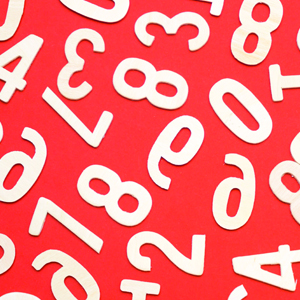Book Review – The Magic of Cholesterol Numbers by Sergey A. Dzugan, MD, PhD
 Dr. Dzugan may just turn the medical industry upside down with this book. He sets the stage by explaining that—fueled by pictures of seriously clogged arteries—we have bought into the delusion that elevated cholesterol levels signal that cholesterol is on the warpath to attack our arteries. Statins aim to reduce cholesterol levels by interfering with the production of cholesterol, and to do so in a limited fashion; hence, they are currently the most commonly prescribed drug. Dr. Dzugan contends that this approach is not viable, and asks the question: Why does cholesterol get such a bad rap?
Dr. Dzugan may just turn the medical industry upside down with this book. He sets the stage by explaining that—fueled by pictures of seriously clogged arteries—we have bought into the delusion that elevated cholesterol levels signal that cholesterol is on the warpath to attack our arteries. Statins aim to reduce cholesterol levels by interfering with the production of cholesterol, and to do so in a limited fashion; hence, they are currently the most commonly prescribed drug. Dr. Dzugan contends that this approach is not viable, and asks the question: Why does cholesterol get such a bad rap?
First of all, he says it is because cholesterol is a steroid, which in and of itself carries negative connotations. We immediately think of the synthetic testosterone-like hormones abused by body builders. Or maybe we think about prednisone, which is close enough to hydrocortisone and cortisone to relieve inflammation but does so at the cost of other severe side-effects. Dr. Dzugan believes that there is no place in the human body for these man-made hormone mimics. Cholesterol, on the other hand, is so prevalent in and important to the brain that it is formed independently in the brain. Thankfully, statin drugs cannot pass the blood brain barrier to interfere with that process!
The term “steroid” simply refers to the shape of the molecule. Hormones made by the testes, ovaries and adrenal glands are all called steroids. Vitamin D, which is produced in the skin, is a steroid. Bile, which is made in the liver to emulsify and promote absorption of fats, is a steroid. Cholesterol is essential to our body function, in and of itself, as well as being a building block for other hormones.
Dr. Dzugan also asks: Why don’t people question the basis of the so-called LDL and HDL cholesterol numbers? These are simply measures of lipoproteins (fat combined with protein) that help shuttle cholesterol around the body to where it is needed. Total cholesterol is calculated as the sum of LDL plus HDL plus triglycerides divided by five. Triglycerides are not cholesterol but are used to estimate VLDL (very low density lipoproteins), which carry about 20% cholesterol. The LDL consists of approximately 50% cholesterol and the HDL is shuttling about 30%. However, the percentage of cholesterol that each is carrying is not accounted for in the total cholesterol equation. If we were to view figuring out our true cholesterol level as a typical math word problem, we would most likely be perplexed as to how to determine the correct answer. And if we did, just exactly what would the answer mean?
Somehow, medical research has not yet answered the question: What does it mean when cholesterol levels rise? When a woman is pregnant, her cholesterol levels skyrocket. This is because a pregnant woman needs to create an astonishing amount of hormones. When cholesterol levels are high outside of pregnancy, it is possible that something is blocking the creation of the hormones made from cholesterol. When cholesterol levels are low, it is possible that there is a problem with hormone formation.
Dr. Dzugan’s theory (backed by clinical case studies and two published reports) is that high cholesterol occurs when normal hormone production is failing, and that by identifying and replenishing the deficient hormones with bioidentical hormones, cholesterol levels fall and the patient’s health improves. He believes that the cardiac risk factors associated with high cholesterol are not because of the cholesterol levels, but because of the underlying hormone deficits. Dr. Dzugan notes that changing diet rarely succeeds in lowering cholesterol levels, but restoring hormones does.
Dr. Dzugan practices what he calls “hormone-restorative therapy” rather than lipidology (a new medical practice specialty). He notes that, by restoring hormone balance, HDL levels may decrease rather than increase because higher amounts of lipoproteins are no longer needed to shuttle cholesterol back to the liver.
Dr. Dzugan is not the first to draw this connection between cholesterol levels and hormone balance. Dr. Jens Moeller reports on normalizing cholesterol levels by treating low testosterone levels in his landmark book Cholesterol: Interactions with Testosterone and Cortisol in Cardiovascular Diseases. And Dr. Broda Barnes reported in his book, Hypothyroidism: The Unsuspected Illness, that high cholesterol levels were the best blood indicators for low thyroid; he also found that high cholesterol numbers fell when those patients went through thyroid hormone therapy.
Imagine! What if the next time you visited your medical practitioner, they measured not only your cholesterol numbers but also your hormone levels and adjusted accordingly? If Dr. Dzugan’s theories ring true, this could be in your future.




